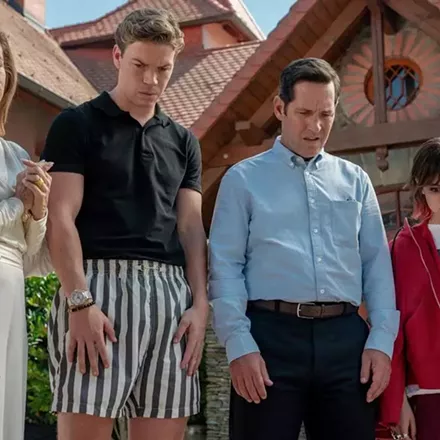
- Harry Potter and the Deathly Hallows Part 2
If you’ve followed the cinematic adventures of Harry Potter over the past decade, it’s hard to imagine how Harry Potter and the Deathly Hallows, Part 2 could fail. A series that began as an investment in J.K. Rowling’s remarkable hero-quest narrative evolved, over the course of seven films, into something else: an investment in the coming-of-age of the three young actors at their center. We would be saying goodbye not just to Harry, Ron and Hermione, but to watching Daniel Radcliffe, Rupert Grint and Emma Watson grow up in those roles. To spoil the good will built into this moment, director David Yates and screenwriter Steve Kloves would have had to turn Harry into terrorist, or had Hermione club a baby seal to death.
It’s fair to say that while Hallows 2.0 is far from a perfect piece of filmcraft, Yates and Kloves know exactly how to guide us through this final chapter. That sense begins with a notable lack of “in our last episode” throat-clearing, reminding us only that Lord Voldemort (Ralph Fiennes) snatched the powerful Elder Wand from the grave of Albus Dumbledore (Michael Gambon) at the end of part one. Harry, Ron and Hermione are still in exile, and still seeking the final horcruxes—the objects containing shards of Voldemort’s soul—in order to destroy them. And Voldemort is gathering his forces as he prepares for the final destruction of Harry Potter.
In the previous three Potter installments, Yates’ lack of experience directing big action set-pieces was often one of the biggest obstacles to complete success. He’s got a few doozies to bring to life here—Harry and company’s break-in (and break-out) at Gringott’s; an escape from a burning Room of Requirement; the climactic Battle of Hogwarts itself—and he seems to have gotten his feet under him in time to give them a solid kick. If anything, the Battle of Hogwarts feels disappointingly truncated, something with the potential to match The Lord of the Rings: The Two Towers’ Helm’s Deep assault for epic grandeur that’s relegated instead to a few big battles.
But there’s also a lot of loose-end-tying to get out of the way, and it would have been easy for all those more meditative, expository scenes to become a hindrance. Instead, they’re rich with the moments that make this story deeper and more resonant, no matter how many familiar archetypal elements Rowling appropriated for her story. The heretofore secret back story of Severus Snape (Alan Rickman) not only adds complexity to Harry’s intimidating antagonist, but allows for Harry’s realization that both Dumbledore and his own father weren’t quite as saintly as the image he has held of them. Harry’s encounter with the spirits of his dead loved ones serves not to remind him that he’s alone, but to strengthen his sense that he can meet his destiny on his own (though never completely on his own). The first chapter of the first Harry Potter book was titled “The Boy Who Lived”; this conclusion is about reaching a point where the boy is no longer a boy.
And that’s why there’s an unexpected emotional power to a pair of twinned sequences: Harry’s near-death meeting with Dumbledore in a mystical version of King’s Cross train station, and a coda that takes place in the same station, on the same platform where an 11-year-old Harry thrust himself through Platform 9-3/4 to enter the wizarding world for the first time. It’s a reminder that Harry’s defining moment is not facing down Voldemort in a blaze of magical pyrotechnics but deciding to accept that challenge—choosing, as Dumbledore phrases it, “to go on.” It’s powerful because we get a chance to see that, as singular as Harry Potter’s story has become in our cultural mythology, it’s a universal story, the story of putting aside the fears and anxieties of childhood and accepting uncertainty, pain, death and loss.
So I’m not sure it’s possible to separate whether Deathly Hallows, Part 2 is a crowning cinematic achievement on its own terms, with the entirety of this 10-year journey. Perhaps it’s only truly perfect as a realization of the author’s vision. And perhaps it’s a perfect way to say goodbye to these characters—now men and women, realizing they are looking toward the life journey of another generation that’s only just beginning.
HARRY POTTER AND THE DEATHLY HALLOWS, PART 2
Daniel Radcliffe, Rupert Grint, Emma Watson
Rated PG-13



